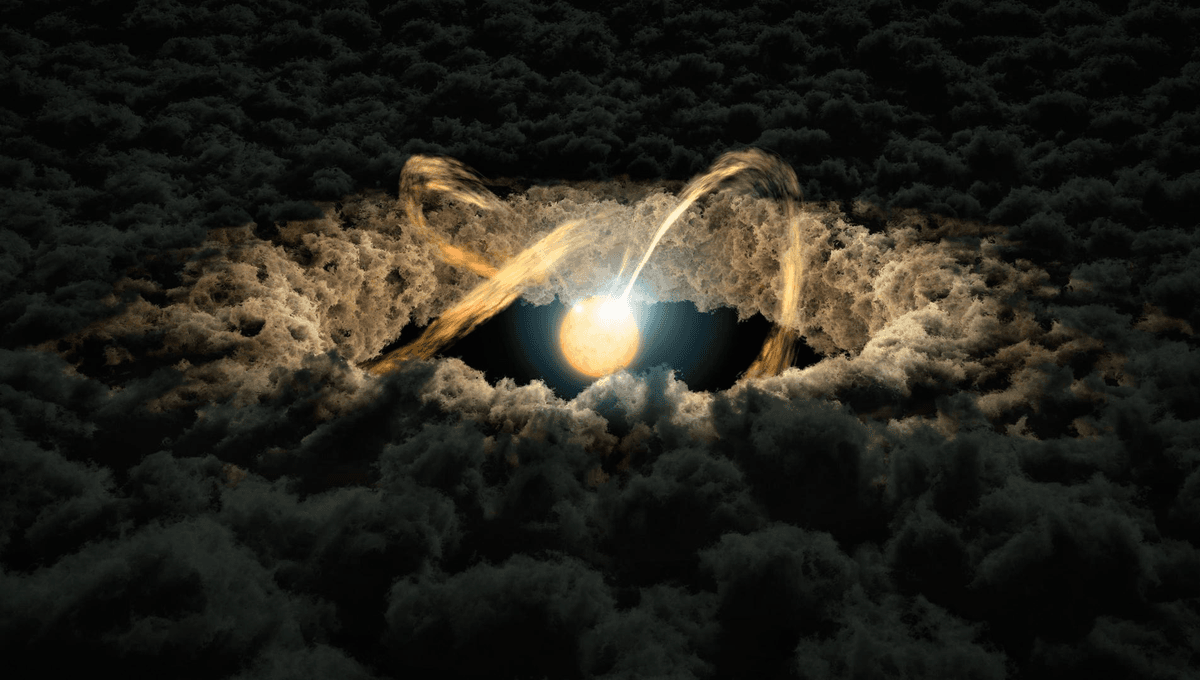
Astronomers have discovered two objects that at first looked like a well-known stage in star formation, but also have features that don’t fit that at all. Their forthcoming paper announcing the discovery carries more bewilderment than answers, proving once again we are far from having the galaxy – let alone the universe – figured out.
ADVERTISEMENT GO AD FREE
Someone could call a book on how stars are born A Song Of Ice And Fire if the name hadn’t been pinched for other purposes. The fusion that stars undergo isn’t the same as the chemical process we call “fire”, but it looks and feels similar – on the way to their creation, however, star-forming regions produce many different ice molecules. A team of researchers notes in their new paper that these ices; “Play a significant role in the chemical evolution of star-forming regions and formation of planetary systems.”
Consequently, gas clouds around partially formed stars tend to absorb light at specific wavelengths associated with ice molecules. So when two objects that showed ice absorption features were detected in the course of an infrared satellite survey of the Galactic plane, it was not initially considered odd. Those sorts of features are seen both in young stellar objects (YSOs) with surrounding icy disks, and fully fledged stars that happen to sit behind dense clouds of materials that include a lot of ice.
However, the researchers noticed something unusual; the pair are not in a known star-forming region, and no dense clouds appear to be nearby. Moreover these two objects’ infrared energy distribution peaks at 5 micrometers – not only does that not match any YSOs or background stars we have seen, but it’s also too short for our models of how stars should ignite.
Clearly, it was time for further investigations, which were done with the Atacama Large Millimeter/submillimeter Array (ALMA) telescope. ALMA found spectral lines consistent with carbon monoxide and silicon oxide in the direction of these objects as well as signals indicative of shocked gas. On the other hand, dust emissions were not detected.
These features, the authors write; “Cannot easily be accounted for by any of known interstellar ice-absorption sources.” In other words, the pair; “May represent a previously unknown type of isolated icy objects.” It’s not just the gas that’s shocked.
The two objects are in almost exactly the same direction from us, towards the Crux-Scutum arm of the Milky Way, but that doesn’t mean they are next to each other. In fact, the distances to these objects proved another source of confusion.
ADVERTISEMENT GO AD FREE
Object 1 is either about 6,500 light-years away – or 30,000 light-years, depending on different interpretations of measurements of its velocity, which is an uncomfortably wide variation. Object 2 looks to be around 43,700 light-years away. Some other objects spotted in the same direction have been confidently assessed as sufficiently different distances to not be relevant. Why the only two objects with these features we have found should be thousands of light-years apart, but in almost exactly the same direction as seen from Earth, is just one further mystery. Twenty-one similar fields were observed with the AKARI satellite that found this pair, none of which showed anything similar.
More significantly, attempts to estimate the distances to the carbon monoxide gas give a range of values, but none as far as Object 2, and most not consistent with Object 1. Consequently, the clouds couldn’t be responsible for the odd spectra.
If these distances are correct, both objects are very bright, putting out at least 30 times as much light as the Sun, and probably hundreds of times solar luminosity. Many high-mass stars are brighter still, often thousands of times as luminous as the Sun, but they don’t give a good impression of being surrounded by ice. If the objects were very large (say, giant gas clouds illuminated by many stars) this would be less puzzling, but ALMA places a maximum size of around 10 times the Solar System – suitable for a giant disk around a star, but not for a multi-star nest.
Instead of being young stars, the authors contemplate the possibility the pair are highly evolved AGB stars that have thrown out a lot of material, which has reached such distances from the stars’ heat that ice can form. At this stage, nothing can be taken off the table, but the authors note differences from any known type of highly evolved star.
ADVERTISEMENT GO AD FREE
The JWST is the one instrument that might be able to sort this out, and New Scientist reports the team has applied for time on it, but they’re joining a famously long queue.
The study has been accepted for publication in the Astrophysical Journal, and is available as a preprint in ArXiv.org
[H/T New Scientist]
Source Link: Strange Objects Could Be A New Kind Of Star That's Inexplicably Icy